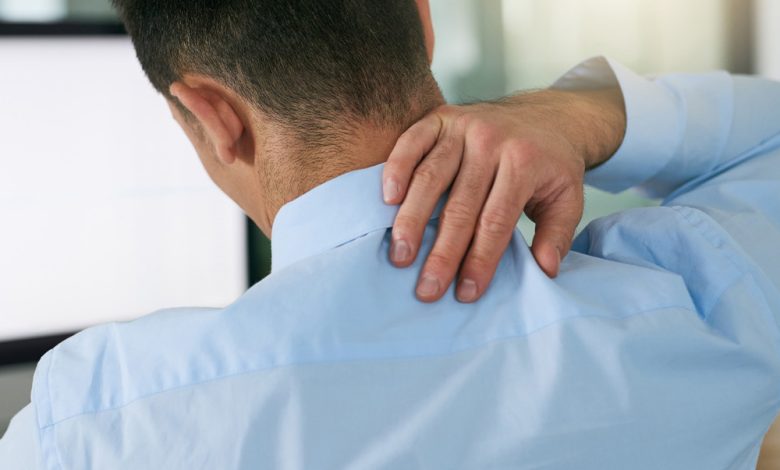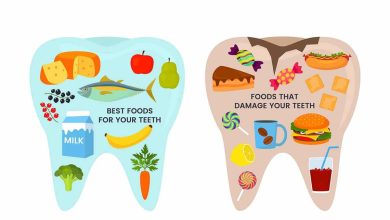Degenerative disc causing cervical kyphosis

Degenerative disc causing cervical kyphosis
The term kyphosis is used to describe a “C” curve in the spine. The curve “kyphosis” has a “C” opening in front of the body. This type of curve is opposite the “lordotic” curve in the spine. The lordotic curve has an open back facing. The standard spine has both types of curves but in smaller numbers. These curves become a problem if they are bigger than usual – if the curve is large, it becomes a big problem. Many different conditions can lead to cervical kyphosis.
Kyphotic curve:
The thoracic, or central part of the spine, usually has a kyphotic curve. Thoracic kyphosis is common when measured at 20-40 degrees. The cervical spine (neck) and lumbar spine (lower back) have “lordotic” curves facing away – as in “C”.
When the thoracic spine bends beyond the normal range, it creates a “hunchback” look and the shoulders are forward. When the cervical spine or lumbar spines lose their lordotic shape and begin to bend forward, a rare condition is called “kyphosis”. however, An abnormal anterior curvature can lead to problems within the spine beyond the abnormal appearance.
Anatomy of the cervical spine:
As mentioned above, the cervical spine naturally has a lordotic curve, so kyphotic spinal deformity means that there is an abnormal bending forward in that part of the spine. Loss of normal cervical lordosis may be localized, occurring in one or a few parts of the vertebrae, or may involve many parts of the cervical spine. Which may also cause military neck. However, To understand your symptoms and treatment options, you must first understand some of the common anatomies of your neck.
List some symptoms:
- Neck pain
- Crick in neck.
- Neck stiffness
- Headaches
There may be excruciating pain in the arms, hands, and fingers due to the tightness of the neck. Other symptoms include decreased mobility, muscle weakness, bladder, and intestinal control problems, and functional problems.
Common Causes behind this condition:
There are several causes of cervical kyphosis. This condition can develop in children and adults.
-
Degenerative Disc Disease
The first cause is degenerative disc disease. The degenerative process of intervertebral discs causes many spinal problems. In older adults, wear and tear of aging on the discs between each vertebra can cause the disc to fall off. As the discs collapse and grow smaller, the head tilts forward and the neck begins to bend forward. This starts a process that may continue for years. The weight of the head causes an imbalance of the force pushing the neck forward. This gradually leads to a growth curve and may end up in kyphosis.
2.Congenital kyphosis (Birth defect)
The second cause of cervical kyphosis is congenital, which means it is a congenital factor affecting spinal development. A person is born with a defect, such as an incomplete spinal shape, which results in the development of a type of kyphosis in the neck. Congenital kyphosis often leads to disruption of the growth of the vertebrae themselves. Instead of growing normally, the vertebrae grow into a triangular shape with a small end facing forward. however, When a baby has congenital kyphosis, there is often a congenital defect in other parts of the body. Often, there is kidney failure and a urinary system.
Treatment of congenital kyphosis
Treatment of congenital kyphosis is usually surgery. Early surgical intervention usually produces the best results and can prevent further progression. The type of surgical procedure will depend on the type of abnormality. Conservative (non-surgical) treatment programs are not very effective in treating this type of kyphosis. Apart from surgery, there is an important need for close monitoring and follow-up to prevent major complications.
3.Injury to spine
The third cause of cervical kyphosis is pain, which is a result of cervical spine injury. This may be from stress fractures of the vertebrae or from damage to the ligaments behind the cervical spine. When a vertebra pressure fracture occurs, the vertebral body may heal in a balanced way. This results in the same condition described above in the triangular vertebrae of congenital kyphosis. The resulting imbalance can lead to increased neck forward movement. however, If kyphosis becomes severe enough, it can shorten the spinal cord causing a condition known as spinal stenosis. Spinal compression due to weight loss can lead to neurological problems, such as pain, numbness, and loss of muscle strength.
4.Iatrogenic
Fourth, and the most common cause of cervical kyphosis, iatrogenic. Iatrogenic means that the problem arises from treatment results, such as surgery. Kyphosis following laminectomy surgery is very common. It occurs more often in children than in adults.
However, other common causes of cervical kyphosis include spinal infections, spinal cord injuries, and spinal diseases (such as ankylosing spondylitis). Cervical kyphosis may occur many years after treatment with cervical cancer. Radiation therapy may affect the development of the cervical spine in children who received radiation therapy in childhood.
Diagnosis for cervical kyphosis
Finding the cause of your neck problem starts with a complete history and physical examination. After a history and physical examination, your doctor will have a good idea of the cause of your pain. To determine the exact cause of your neck pain, your doctor may use a number of diagnostic tests.
-
X-rays
X-rays show the bones of the cervical spine. Most soft tissues of the spine, such as nerves, discs, and muscles, are not visible on X-ray. X-rays can reveal bone problems, such as infection, fractures, or bone marrow transplants. However, An X-ray may give an idea of the extent of the damage to the spine. X-rays will be helpful in showing the extent of degeneration and osteoporosis and give your doctor an idea of whether cervical stenosis is present.
-
Magnetic Resonance Imaging (MRI)
MRI is the most commonly used scan to examine the spine because it can reveal abnormal areas of soft tissue around the spine. it is better than an X-ray because, in addition to bone, it can also show images of emotions and discs. also, it is designed to detect tumors, herniated discs, or other soft tissue diseases. MRI is painless and lasts for 90 minutes. However, During MRI, computer images with multiple spinal segments are taken. Unlike many other tests, using X-rays, MRI uses magnetic fields and radio waves to detect neck structures. however, MRI allows the doctor to clearly see the nerves and discs without the use of special dyes or needles.
Treatment for cervical kyphosis:
Several treatments are recommended for military neck or cervical kyphosis.
-
Conservative Treatment (Non-surgical)
Treatment of cervical kyphosis depends largely on the pressure on the spine. If cervical kyphosis primarily causes pain and anxiety about your appearance, then your doctor may consider trying to control your pain and disability with a physical therapy program, minimal pain medication, and a neck brace.
-
Surgical Treatment
Excessive kyphosis can be treated, and treatments have developed over time. Today, surgery to treat cervical kyphosis often involves a spinal cord associated with “stage instrumentation”. This means that some kind of metal plate or rod is used to hold the spine in the correct position.
However, If the deformity is corrected (meaning it is not worse), and there are no emotional problems due to spinal compression, surgery is usually not recommended because the problem will not be too serious. Whether you have surgery or not, your doctor may have a physical therapist create an exercise program developed just for you. The physical therapist will teach you ways to prevent further injury to your neck.





